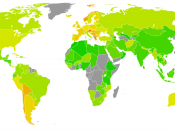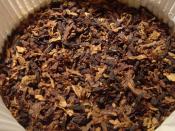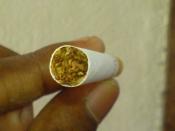A dangerous crop is lurking in the heart of the United States; yet it seems to be oblivious to all. The federal government appears to own the utmost oblivion regarding this crop. State governments attempt to rectify the harms associated with this plant; however its use continues to be very prevalent in this society. Cultivated in more than one hundred countries (Moore 800), about seven million tons of this deadly plant is produced per year. It is marketed virtually everywhere, from Canada to China. Though it is related to tomatoes, potatoes and eggplants, it yields devastating effects. The genus of this crop: Nicotiana tabacum; better known as tobacco, is the main ingredient of smoking products and chewing tobacco (Collins 213).
Christopher Columbus discovered the tobacco plant upon his arrival at the New World in 1492; however, it is believed that tobacco was first grown in the Americas in 6000 B.C.
and its use began in 1 B.C. among the Native Americans. They would smoke the tobacco in the form of crude cigars, and use it in enemas. Sailors then returned from the New World with tobacco seeds in 1550, introducing it to the European world (Borio 1). The first varieties of tobacco found by the Spanish and Portuguese traders were very harsh and strong. In 1612, John Rolfe cultivated a new, milder form of tobacco in the colony of Jamestown. Rolfe may have obtained these seeds from the Caribbean island of Trinidad; however it is believed that the plant originated in Brazil. This newfound tobacco became one of Jamestown's most valuable crops in its trade with England. This launched the widespread pastime of smoking (Collins 212). However, the modern tobacco cigarette as they are known today did not come into use in the United States, until the end of the...


